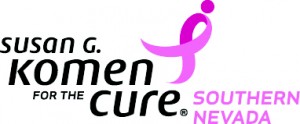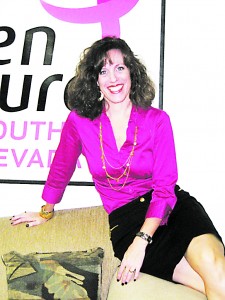Susan G. Komen for the Cure – The State of Breast Cancer 2011
September 29, 2011 by Las Vegas Black Image Magazine
Filed under Feature, Health
by Stephanie Kirby
 It does not matter if you are a woman or a man. Your ethnicity does not matter. It does not matter if you are Christian or Jewish. It does not matter where you live. Your salary does not matter. We are all susceptible to breast cancer. It knows no boundaries. What does matter is that this is your life.
It does not matter if you are a woman or a man. Your ethnicity does not matter. It does not matter if you are Christian or Jewish. It does not matter where you live. Your salary does not matter. We are all susceptible to breast cancer. It knows no boundaries. What does matter is that this is your life.
For many years, it is safe to say that many of us did not know someone with breast cancer. Or perhaps you did know someone, but knowledge of their struggle was not shared. Overcoming the disease was not celebrated. Triumphant stories were not featured in the media. We live in a very different world from when Susan G. Komen for the Cure was started in 1982 — and, thankfully so. Today, pink is power. Pink is awareness. Pink is survivorship.

Stephanie Kirby, executive director, Susan G. Komen for the Cure of Southern Nevada.
While it is well-known that men are also diagnosed with breast cancer, for the purposes of this article, we will focus on women. Breast cancer is the most frequently diagnosed cancer among women of nearly every racial and ethnic group — including African-Americans, American Indian/Alaska Natives, Asian/Pacific Islanders and Hispanic/Latinos. And while race does not determine or increase a woman’s chance of developing breast cancer, there are differences in rates among different ethnic groups.
Based on the American Cancer Society’s Breast Cancer Facts and Figures for 2009-2010, Caucasian women have a higher rate of developing breast cancer than any other racial or ethnic group. However, again according to the ACS, Cancer Facts and Figures for African-Americans 2009-2010, among women under age 40, African-Americans have a higher incidence of breast cancer than white women and it is the most common cancer among African-American women. Further, while Caucasian women are diagnosed at a higher rate, African-American women are more likely to die from this disease.
While African-American women were less likely to obtain regular mammograms than Caucasian women in the past, both groups now have the same rate of mammography. One theory related to the difference in survival rate between the two groups is a lack of follow-up care after an abnormal mammogram. But what professionals appear to be finding more often is that, upon diagnosis, the tumors in African-American women are often more advanced than Caucasian women.
At the 2010 San Antonio Breast Cancer Symposium, it was revealed that only about half of the women in the United States get an annual mammogram — even if they are insured. The professional recommendation of Susan G. Komen for the Cure and the American Cancer Society is that all women at average risk for breast cancer begin mammography screenings at age 40. It is simply not acceptable for women to ignore this recommendation.
The two biggest risk factors for developing breast cancer are being a woman and getting older. Since there is nothing we can do to change either one of these factors, women often wonder what steps can be taken to decrease their chances of getting breast cancer and increase their awareness. We suggest four easy-to-follow steps:
1. Know your risk: Learn your family history and talk to your doctor about your personal risk.
2. Get screened: Start mammography screenings at 40 if average risk, talk to your doctor prior to age 40 if you believe you may be at higher risk and begin clinical exams at age 20.
3. Know what is normal for you: Since six of the eight signs of breast cancer are visual, learn how your breasts look and feel, and talk to your doctor about any changes you notice.
4. Make healthy lifestyle choices: Maintain a healthy weight, exercise and limit your alcohol intake.
Being diagnosed with any disease is frightening, to say the least. Taking the mystery out of the disease by arming yourself with education is absolutely the first step. October is Breast Cancer Awareness Month and you will likely see many products turn pink in support of the cause. But the cause extends beyond the color — Susan G. Komen for the Cure wants to see less talk and more action! As was stated earlier in the article, it is simply not acceptable that only 50 percent of American women receive mammograms. Pick up the phone and make the appointment.
Less talk. More action. And we hope to see you all on May 5, 2012, in downtown Las Vegas for the 17th annual Southern Nevada Race for the Cure!






Couldn’t have said it better myself.